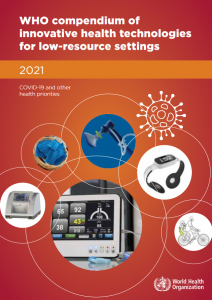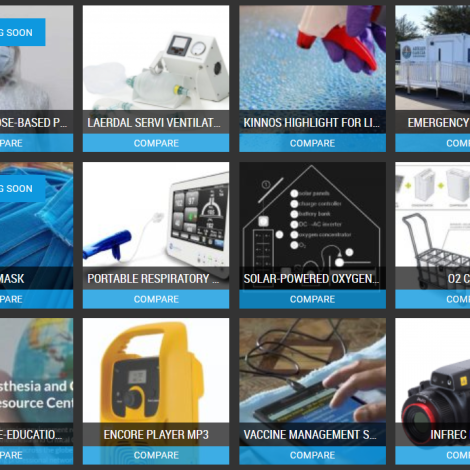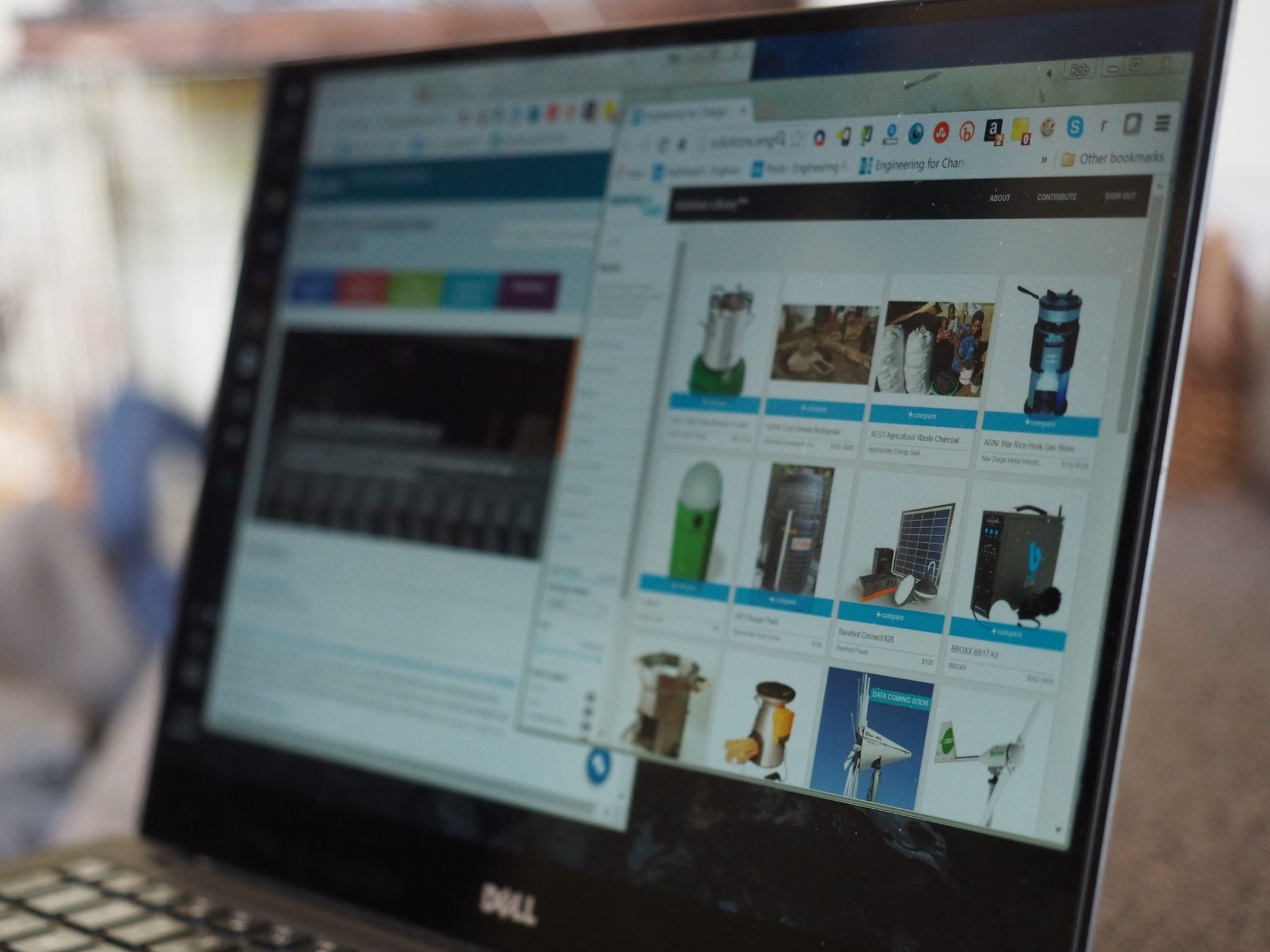 In May 2020, at the height of the pandemic, the World Health Organization announced an open call for submissions to a new compendium of medical technology for low-resource settings. The organization sought to capture technology developed during a surge of innovation in response to COVID-19’s effect on underserved communities. The call received 42 submissions. The months following the close of the call saw an international, multi-disciplinary work group of experts investigating each of the technologies. The process was deeply rigorous. The finished product, the fifth WHO compendium of innovative health technologies for low-resource settings, presents 15 commercially available products and nine prototypes that may have an impact on COVID-19 response and preparedness.
In May 2020, at the height of the pandemic, the World Health Organization announced an open call for submissions to a new compendium of medical technology for low-resource settings. The organization sought to capture technology developed during a surge of innovation in response to COVID-19’s effect on underserved communities. The call received 42 submissions. The months following the close of the call saw an international, multi-disciplinary work group of experts investigating each of the technologies. The process was deeply rigorous. The finished product, the fifth WHO compendium of innovative health technologies for low-resource settings, presents 15 commercially available products and nine prototypes that may have an impact on COVID-19 response and preparedness.
Engineering for Change has partnered with the WHO since 2016 to support the dissemination of compendia of health technologies for low-resource settings. This organization’s support has centered on our Solutions Library, a living database of technologies that meet basic needs in underserved communities. E4C worked closely with WHO to establish a common taxonomy of prioritized performance parameters for health technology.
Our research fellows have integrated products featured in WHO compendia, applying the standardized format to make for easy comparison among similar technologies and enabling users to procure the devices from distributors or connect to the designers. Timed to coincide with the release of the new WHO compendium, the 24 products and prototypes featured there also have a place in the Solutions Library.
The partnership allows decision makers to compare the characteristics and performance of the technologies, says Adriana Velazquez Berumen, Biomedical Clinical Engineer with the WHO in Geneva, Switzerland. Ms. Velazquez leads the collaboration with E4C and has championed the role of biomedical engineering and medical device knowledge dissemination for over a decade. Under her guidance, the WHO-reviewed medical devices can be easily discovered and compared within E4C’s Solutions Library.
View and compare innovative health technologies in E4C’s Solutions Library
“This collaboration with the WHO’s Medical Devices Unit has been of particular importance to E4C during this unique time in history,” Iana Aranda, E4C’s President, says. “We speak a common engineering language and share the common goal of applying innovation to accelerating impact and achieving the SDGs. We are proud to play a part in disseminating the essential work of the WHO to drive technology transfer and improve the health of underserved communities worldwide.”
Multidisciplinary investigation: How a health technology enters the compendium
Every technology submitted to the open call underwent a lengthy evaluation process. Multidisciplinary panels of experts conducted clinical, technical, regulatory and other assessments. This compendium focused on technologies developed in response to COVID-19, so the submissions passed through two relevant WHO panels, one of experts in respiratory devices and one that specializes in personal protective equipment. Submissions also underwent evidence-based evaluations by Euroscan International and the Global Clinical Engineering Alliance. Products with insufficient information or evidence were invited to resubmit during future calls.
“What I found most relevant was the multidisciplinary team, which brought together clinical engineers, physicians, respiratory therapists, regulatory affairs experts, amongst others. The whole process was consensus-driven and focused on a thorough and fair assessment,” Dr. César Vieira, Internal Medicine Physician at Centro Hospitalar Universitário de Lisboa Central in Lisbon, Portugal, told E4C. Dr. Vieira was a member of a working group that evaluated the technologies in the WHO compendium, and he is a member of E4C’s Innovation lab Steering Committee.
“A global perspective was possible by the involvement of experts from around the world and careful thought was given to issues critical to deployment in low-resource settings such as maintenance, access to support and spare parts,” Dr. Vieira says.
How will the compendium be used?
The compendium is freely available on the WHO website and published under a Creative Commons license for free distribution. The only barrier to access is an Internet connection. But how will the compendium be used?
“Procurement of the right technologies is definitely an issue for governments, NGOs and other stakeholders in low resource settings. I also hope that the compendium will become a showcase of promising technologies, some still in the prototype phase, allowing them to gain visibility and funding,” Dr. Vieira says.
One of the goals of the work on the fifth compendium was to create a framework for a living, continuously updated assessment of innovative health technologies. The partnership with E4C supports that work by placing each technology in our continuously updated database.
“I would also like to highlight the partnership established with E4C, drawing heavily on their experience with showcasing, categorizing and comparing technologies through the Solution’s Library,” Dr. Vieira says. “This enabled the highlighted technologies to be listed in the Solution’s Library website as soon as the compendium was made available and also allowed comparison tables to be built between similar products.”
Resources
View all the WHO Compendia of Innovative Health Technologies in Low-Resource Settings
Search the Engineering for Change Solutions Library for technologies from WHO Compendia

